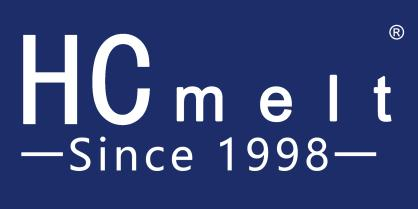

Hot-melt adhesive (HMA), also known as hot glue, is used widely in packaging, woodworking, textiles, electronics, automotive and many other industries. But exposure to sunlight and ultraviolet (UV) radiation often raises the question: does hot-melt adhesive resist UV light?
Hot-melt adhesives are thermoplastic polymers that are solid at room temperature and melt when heated (typically between 80–150 °C), so they can flow into bonding surfaces before cooling and solidifying. Common base polymers include EVA (ethylene-vinyl acetate), polyolefins, polyesters, polyamides, urethanes and others. Additives like tackifiers, waxes, stabilizers or crosslinkers are often used to modify strength, setting speed, flexibility, and environmental resistance.
Without special treatment, hot-melt adhesives are not inherently highly resistant to UV radiation. Some common effects of UV exposure include:
Discoloration: UV can cause yellowing or darkening, especially in adhesives with aromatic or unsaturated polymer segments.
Loss of mechanical strength: Over time, bonds can become brittle, lose flexibility, or suffer from micro-cracking.
Degradation: The polymer chains in many adhesives can degrade under UV, especially when combined with heat, moisture, or chemical pollutants (ozone, oxygen). This weakens the adhesive bond.
So, typical hot-melt adhesives (especially rubber-based or EVA-based ones) exposed to prolonged direct sunlight will likely experience reduced performance over time.
To improve UV resistance, several strategies are used:
Additives / Stabilizers UV stabilizers and antioxidants can be incorporated into adhesive formulations. These absorb or block UV radiation or neutralize free radicals formed when UV degrades polymers. This slows down the degradation process.
UV Crosslinking Some hot-melt adhesives are designed to be crosslinked upon exposure to UV light, which creates a more robust three-dimensional polymer network. These UV crosslinked hot-melts can offer much greater resistance to solvents, chemicals, moisture, and aging under light. For example, UV crosslinked hot melts are described as being resistant to aging and light, suitable for outdoor applications, and able to tolerate aggressive chemicals.
Reactive Hot-Melt Adhesives Some hot-melts cure (continue reacting) after the initial setting, via moisture or other means. These reactive types can have improved stability, though UV resistance will depend on the chemistry of the cured network.
If you plan to use hot-melt adhesive in conditions where there is direct, prolonged exposure to sunlight or UV light, then selecting a UV-resistant version is critical. Use cases include:
Outdoor signage, labels exposed to sun
Automotive parts under hood or exterior trim
Packaging stored outdoors
Electronic housing or components with light exposure
Here are features to look for:
| Feature | Why It Helps |
|---|---|
| UV stabilizers (Hindered amine light stabilizers, UV absorbers) | They can absorb or mitigate UV energy and reduce polymer breakdown. |
| Crosslinked or reactive polymer networks | Greater cohesion, less prone to embrittlement or loss of adhesion. |
| Suitable base polymer (e.g. polyamide, polyester, UV-cured acrylics) | Some polymers handle UV better than others. |
| Proper formulation with minimal unsaturation if possible | Fewer aromatic or unsaturated groups often means less susceptibility to UV-initiated degradation. |
| Testing data for outdoor aging, UV exposure, temperature cycling | Look for certifications or data. |
In summary:
Standard hot-melt adhesives generally have limited UV resistance. Under continuous UV exposure they may yellow, lose strength, and degrade over time.
Enhanced formulations, including those with UV stabilizers or UV crosslinking, offer much better resistance and are suited for outdoor or exposed use.
Whether an adhesive is suitably UV resistant depends on its chemistry, additives, and whether it was designed for the conditions of use.
Previous: What Are Hot Melt Adhesives Made Of?